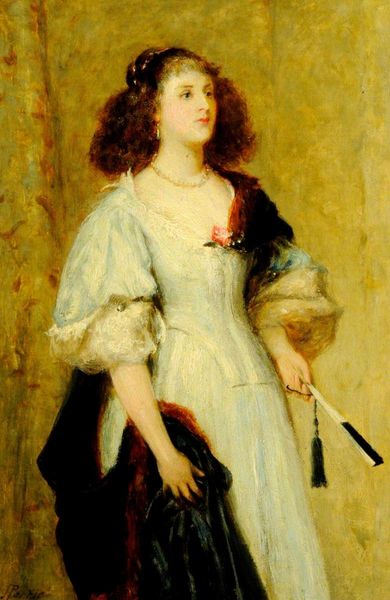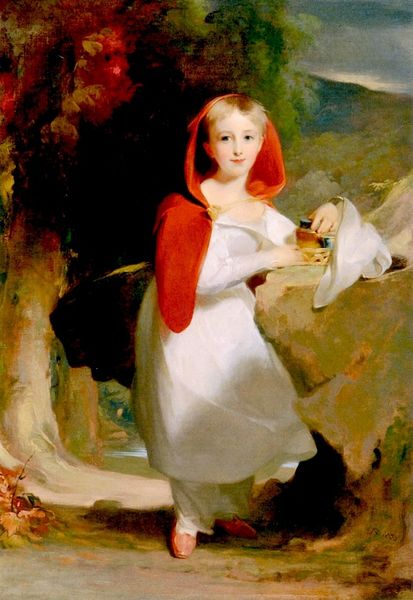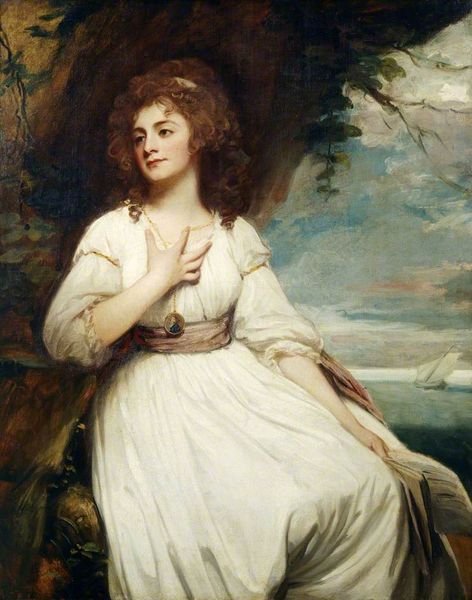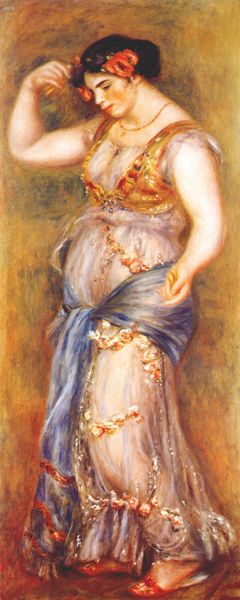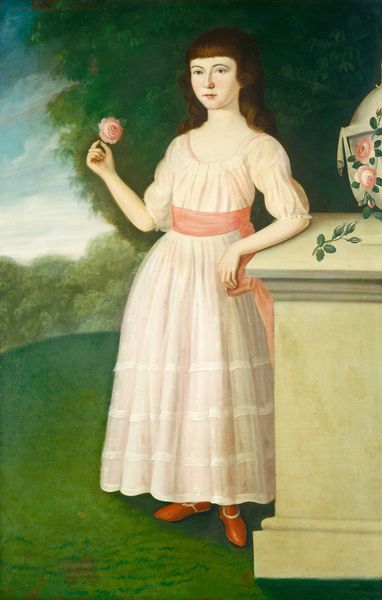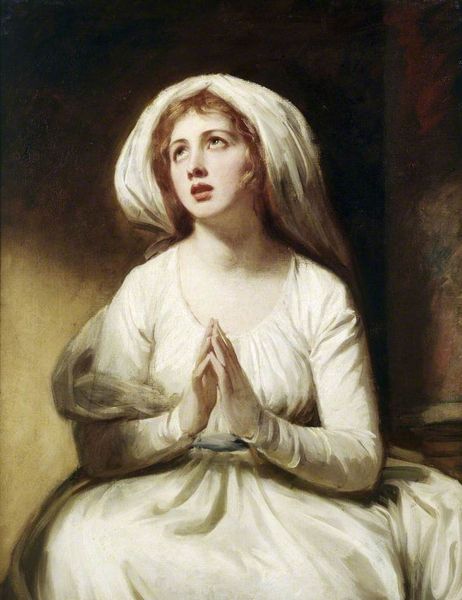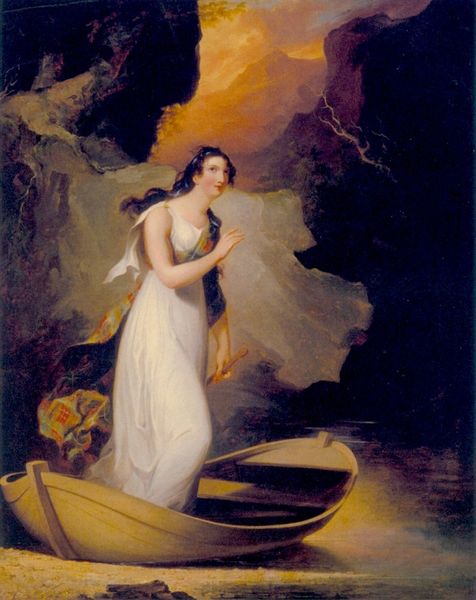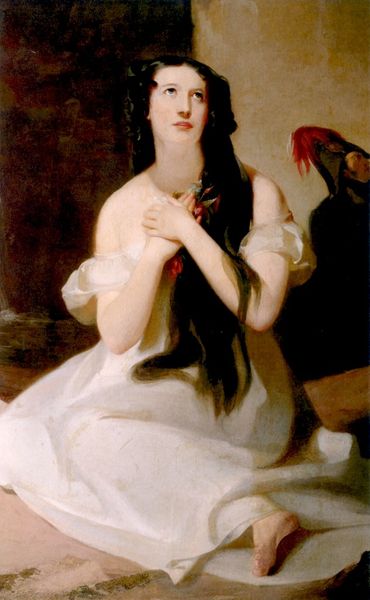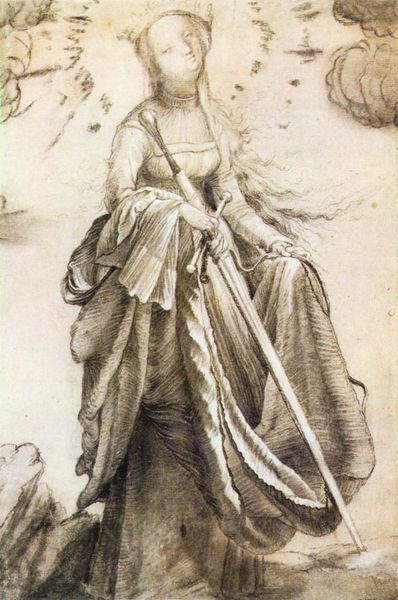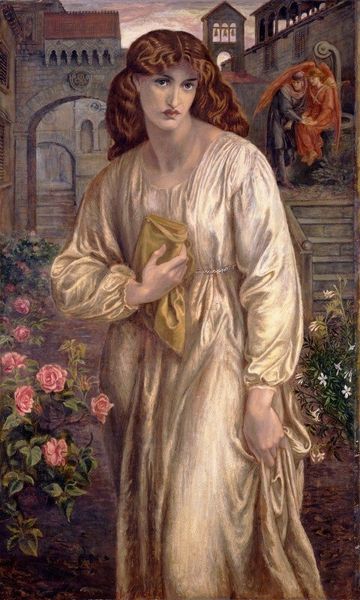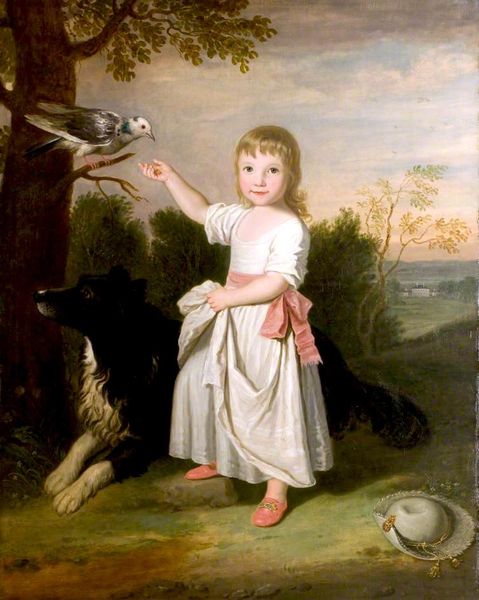
painting, oil-paint
#
portrait
#
painting
#
oil-paint
#
oil painting
#
romanticism
#
history-painting
#
academic-art
#
portrait art
Dimensions: 146 x 100 cm
Copyright: Public domain
Curator: Here we see “Pinkie,” a celebrated portrait completed around 1794 by the English artist Thomas Lawrence. It’s a compelling example of late 18th-century Romantic portraiture, executed in oil paint. Editor: It strikes me as instantly melancholic. The vast, tempestuous sky seems to mirror some inner turmoil in the sitter. The sheer fabric of her dress hints at a delicate vulnerability, too. Curator: Lawrence achieved fame at a young age for capturing the essence of aristocratic sitters, often employing dramatic lighting and a bravura brushstroke that reflected the subject's status. The canvas aimed to flatter the upper class who dominated British society and shaped its cultural landscape. Editor: Yet this “Pinkie” somehow disrupts that expectation. She's caught between the grounded darkness beneath her feet and a swirl of dramatic weather, which reflects themes of societal anxieties surrounding gender and power. Notice how her pale dress, a visual stand-in for purity, becomes almost ghostly against that brewing storm? Is it a representation of innocence, or a premonition of her fate? Curator: “Pinkie” was a nickname for Sarah Goodin Barrett Moulton. Lawrence painted her not long before she tragically died at a young age, possibly contributing to that feeling. It is easy for modern audiences to forget such portraits also fulfilled an important societal function in solidifying familial social standing. Editor: Absolutely, and when considering paintings like “Pinkie”, it’s useful to discuss representation itself. Who has the power to immortalize whom and for what purposes? By placing a child on this pedestal of 'beauty' and then exhibiting it to an elite audience, aren't we furthering narratives that disproportionately affect young girls today? Curator: Certainly. “Pinkie” now serves less to aggrandize her family’s history than to stimulate ongoing dialogues on how we see class, power, representation, and mortality itself, framed as it is through an artwork whose original cultural function was vastly different from our experience today. Editor: A painting both beautiful and profoundly unsettling. It is important to consider art as more than beauty and instead explore the broader socio-political implications behind portraiture and its power structures.
Comments
No comments
Be the first to comment and join the conversation on the ultimate creative platform.
